Red Orchestra 2: Heroes of Stalingrad is Tripwire Interactive’s latest addition to the Red Orchestra series – a PC exclusive FPS set in WWII and designed around realism. It’s a standalone sequel that brings lots of hype to the table and today we’ll see how well it lives up.
Heroes of Stalingrad will take the award winning Red Orchestra franchise into the next generation of gaming. Cutting edge graphics and audio built on Unreal Engine 3, inventive features and streamlined realism will deliver an unrivaled WWII experience. Focusing on the Battle of Stalingrad and the surrounding operations, both German and Russian, from July 1942 to February 1943 the game allows the player to experience one of the most brutal battles in all of human history. For the first time ever in a first person shooter gamers will be able to experience WWII from the Axis side in a German single player campaign. As always with the Red Orchestra franchise, Tripwire will aim to deliver unrivaled accuracy and attention to detail, along with gritty, vicious combat in multi-player, co-op and solo modes. Again, Tripwire have listened to the fans and have designed a whole set of new features to make the game more accessible and easy to get into – all while delivering the tactical shooter realism fans of the original game loved.
Features:
RO multiplayer taken to new heights: Tripwire’s renowned MP already exceeds that of much of the competition – the new game will stretch that lead even further. With highly addictive and fun varieties of game-play online, the game will feature everything from quick, brutal firefights, through to more intricate and challenging simulation modes.
Persistent Stats Tracking and Player Progression: Persistence constantly gives the gamer something to strive for and keeps them playing. Grow in rank, earn medals, improve your abilities, and become a Hero – all visible to the complete online gaming community and embedded within the game.
Heroes: Obtain the ultimate goal and become a Hero online. Players with hero status inspire troops around them and cause fear in their enemies. Heroes have access to the best and rarest weapons and equipment, and will stand out visually from the rest of the soldiers.
Unique Focus – the Battle of Stalingrad in depth: takes the familiar WWII genre into a unique direction. Far removed from the well-trodden Normandy setting, gameplay is based on fresh scenarios and actions the player has never experienced before. Follow the German army as they assault the city of Stalingrad, to the banks of the Volga. Follow the Soviet army as it holds the city against all the odds then destroys the Axis forces.
First person cover system: Experience the ultimate firefights that a cover system allows, from the immersion of a first person view. Peek or blind fire over and around cover and more.
Squad Command: Command fire teams on the battlefield using an easy to use first person interface. Suppress the enemy, send a fire team to flank them and hit them where it hurts!
WWII weaponry redefined: true to life ballistics, bullet penetration, breathing, adjustable sights, free aim, weapon bracing, photo-real graphics and more, create WWII weaponry that has no equal.
Morale: Experience what it is like to be a soldier in one of the bloodiest conflicts in history and the importance of a soldier’s state of mind and how it can turn the tide of battle.
Single Player Campaigns: Play through a full German campaign AND a full Russian campaign, in iconic engagements from the Battle of Stalingrad.
Enhanced Unreal® Engine™ 3: Built on an enhanced version of Unreal Engine 3 the game features cutting edge visuals and features.
And coming after release:
Stalingrad Campaign: The Stalingrad campaign will feature the multiplayer maps used in a campaign layout recreating the battle for Stalingrad from both the German and Russian sides. This will be enhanced with story elements through the form of mission introductions and in-game cinematic sequences that begin and end the campaign.
Co-op: Players can connect with their friends and battle AI in multiple game types including the Stalingrad Campaign, Skirmish Mode, and more.
Offline Challenges: Offline challenges such as the shooting range and assault courses let the player learn and hone their skills to perfection with all of the weapons and features in the game. Training with different challenges to achieve awards, win competitions and improve their skills the player can pit their best times/scores against the rest of the online gaming community.
New vehicles: We will roll out new vehicles for the game, including new tanks as well as armored transports.
That’s a lot of nice features. You can thank one of our staff members, Enad, for really showing us this game and he has made contributions to this review.
Single Player
Red Orchestra 2 is focused on World War II – more specifically the battles between Russia and Germany. The biggest battle is of course Stalingrad; a harsh and nasty battle that took place from 1942 to 1943. Red Orchestra 2 focuses on these fronts simply because other WWII games, such as Call of Duty and Medal of Honor, focused more on the American and British fronts. The battle of Stalingrad as well as the skirmishes around it were only covered in a section of Call of Duty 2, and just a few levels in Call of Duty: Finest Hour. Red Orchestra 2 took it upon itself to tell the tale with more depth and more realism.
So the story is one we’ve all heard of. As the game unfolds you’ll find that it is straightforward and not confusing. There is a Nazi campaign and a Russian campaign.
 On certain missions you’ll be read a quote from an actual soldier.
On certain missions you’ll be read a quote from an actual soldier.
The campaign is not a simple shoot-em up type like most FPS games. Throughout Red Orchestra 2 you will interact with all sorts of items such as radios, tanks and you will even take command of squads, being able to order them to your will.
 Weapons training is done to familiarize you with all types of weapons, including pistols, submachine guns, rifles, machine guns and fragmentation grenades. You’ll also discover that, despite the realistic features when dealing with weaponry and bullet count, vehicles still explode by simply shooting them anywhere with bullets!
Weapons training is done to familiarize you with all types of weapons, including pistols, submachine guns, rifles, machine guns and fragmentation grenades. You’ll also discover that, despite the realistic features when dealing with weaponry and bullet count, vehicles still explode by simply shooting them anywhere with bullets! Oh yeah, and you still don’t have visible feet. Looks like Tripwire was so focused on the gameplay mechanics that they forgot to address some of the basic things.
Oh yeah, and you still don’t have visible feet. Looks like Tripwire was so focused on the gameplay mechanics that they forgot to address some of the basic things. Once the training course is complete, you’ll battle as an infrantryman. If you die in the campaign you’ll find that you even respawn just like multiplayer… there won’t be a “mission failed” message telling you that you have to start over again. Your squads are also reinforced the same way as they are in multiplayer. Like I said, it’s multiplayer but with bots, but nevertheless it’s a great way to familiarize yourself with the gameplay mechanics and it’s still entertaining.
Once the training course is complete, you’ll battle as an infrantryman. If you die in the campaign you’ll find that you even respawn just like multiplayer… there won’t be a “mission failed” message telling you that you have to start over again. Your squads are also reinforced the same way as they are in multiplayer. Like I said, it’s multiplayer but with bots, but nevertheless it’s a great way to familiarize yourself with the gameplay mechanics and it’s still entertaining.
Throughout the campaigns you’ll encounter different environments and weather.


After advancing through a few maps, you’ll earn a promotion and then take control of your platoon, followed by lessons in tank gameplay and radio operation. You’ll apply the tactics you learned into combat against the subpar AI, before finishing the lengthy campaigns (which can take up to and over ten hours to complete for each one). I’ll go into the gameplay mechanics later on.
Despite the advanced gameplay mechanics and lengthy time you can spend in the single player mode, the campaigns are no more than multiplayer game modes with bots instead of other players. The maps and game mode functions are identical to multiplayer. This isn’t surprising really, seeing as how Tripwire is an independent developer and the game has a low cost. This game is all about multiplayer and realistic gameplay mechanics, so lets look at those.
Gameplay
Red Orchestra 2: Heroes of Stalingrad has gameplay that will be familiar to those who have played the first one as well as ArmA and ArmA II. It’s focused on realism and implements lots of things that I criticize other FPS games for not having. Lets take a look at the gameplay features.
First and foremost is the first person cover system, something I’ve never experienced before. In most third person cover systems you’ll find your character putting his back on the object he’s taking cover behind, before exposing himself completely to fire around his cover. This is simply not the way soldiers are trained so Red Orchestra 2 introduces a realistic cover system.
Here is an example of the cover system. I’m now taking cover.

I can quickly lean out from the wall just enough to fire at my target, or, as this photo demonstrates, lean out more to fire at more concealed targets.

Now that’s an interesting place to take cover.

This cover system also works when crouching, allowing you to shoot over objects. You can even blindfire.

By default, the left ctrl key is the “do it all button”. This is the button you use to bandage yourself when you’re bleeding, pick up guns/ammo and climb things.

You can of course aim down the sights of your gun, but you can also adjust your sight picture for more long range targets.


Look, finally a game with realistic scopes! The scope is actually the part zooming in, not the entire screen, and it actually looks like a magnification optic and not a perfectly clear piece of glass like other games. He also doesn’t put his eye so close to it – just like in real life since shooter scopes have a thing called eye relief. Eye relief is the distance from the end of the scope (not the objective lens) to your eye. It’s normally between 2-3 inches so that you don’t knock your eye out due to the weapon’s recoil. If your eye is too close or too far, all you’ll see is black although you won’t experience this in the game.

Believe it or not, you can even switch from the scope to the iron sights, since many scope mounts don’t block the sight picture for close range encounters. Impressive!

You can still adjust your sight picture when aiming like this.

Here’s another impressive feature – your light or heavy machine gun’s barrel actually overheats, forcing you to replace it. You can also fire machine guns in semi auto by pressing the middle mouse button, which isn’t really convenient.

There’s no HUD telling you how much ammo you have in your gun. You have to check yourself!


You can also disable automatic reloading and you can even enable “manual bolting”, which means after firing a shot with a bolt action rifle you must press the fire button again to pull the bolt back, removing the empty cartridge and chambering a new round. You also have the option to set up the bi-pod with machine guns. This is done by crouching behind an object, taking cover and then pressing the right mouse button which is normally used to pop out from behind cover.

Now I’m firing after setting up the bi-pod and MG on a window.

You can even set it up on the prone position. This is also automatic.

If all else fails, you also have your rifle bash which can leave bloody results.

Speaking of blood… violence is another thing that Tripwire didn’t cut corners on. You’ll find dismembered limbs in addition to your normal bloody gunshot wounds. There are no bullet holes left in people though, sadly.

There’s a decent amount of weapons – one pistol, submachine gun, bolt action rifle, semi-automatic rifle (two for Germany), light machine gun and sniper rifle for both the Russians and Germans. Each also has frag grenades, smoke grenades, satchel charges and AT weaponry.

Next up is squad gameplay. This is where things get interesting. You have several infantry teams to work with – marksman team (though they’re not always present), rifle team, assault team, LMG team, and an anti-tank engineer team. You can order each team separately or the entire team to go to a certain place, you can cancel orders and you can give either everyone or a specific team certain commands.



You can also call your own artillery strikes or order your team to call one at a location that you specificy.

You’re also tought how to operate radio equipment, and once again it is a whole new level compared to other games.

Lets not forget tank gameplay! It’s more realistic than any other game I’ve played, such as Crysis and Crysis Wars in which the driver can do most of the work and a secondary gunner will do everything else. In Red Orchestra 2, there are many different seats for you to cycle through, each with a separate purpose.

First up is the drivers seat. Here all you will do is drive the tank, nothing else.

You can peek up through the top entrance hole as well.

You control one of the machine guns from here.

Here is the tank commanders seat, from which you order the driver to move the tank. You can tell him to advance forward, backward, left or right the same exact way you drive the tank (W,A,S,D) so it’s really no different in that regard. You can also place a waypoint and the driver will drive to it automatically.

You can open up the top entrance hole as well for a better view.

Here’s another machine gun seat. I suppose you are the commander when sitting in this seat, as you can still do the above tank commands.

Finally you have the main cannon operator’s seat. You can choose to fire AP, HE or smoke rounds.

Squad gameplay also applies to the tank gameplay. Using the same keys you can order another tank team or all of them to do the same commands listed above. You can also tell your gunner to take out targets on his own.

Overall Red Orchestra 2’s gameplay is nothing short of amazing. Now to be honest I’ve never played the first one, ArmA or ArmA II so this game is extremely impressive to me. In fact I will say that Red Orchestra 2’s basic FPS mechanics are the best out there. The only downside to me is the subpar AI. You’ll find them taking cover in weird spots (sometimes exposing themselves entirely) or running straight toward an enemy emplacement (sometimes alone) without you telling them to. However single player is more or less a training exercise anyway. Lets have a look at the multiplayer experience.
Multiplayer
Red Orchestra 2: Heroes of Stalingrad has 64 player servers, PunkBuster anti-cheat and large maps. The map size isn’t quite as large as the sprawling Battlefield: Bad Company 2 but they’re certainly large enough for 64 players. I can’t tell you how many maps are in the game although it does seem like quite a bit. I have no complaints for the level design – you’ll find buildings which are fully explorable (some are partially destroyed), streets with lots of cover and just what you expect to find in a Russian WWII map. They’re similar to Call of Duty 2’s maps although much larger.

The server browser is normal. You’ll find a list of all servers and you can sort by player count, ping, level name, etc. At the top left is a player counter which tells you how many people are online playing the game. When searching for servers it will tell you how many it has found and how many it has filtered. You can filter the game to PunkBuster enabled or disabled, friendly fire enabled or disabled, game mode type, fighting type (tank, infantry for example) and more. It looks like what a multiplayer game’s server browser should look like.
Speaking of game modes, Red Orchestra 2 has four. Each and every one is team based so you will choose either Allies or Axis. They each have their own set of fire teams, usually with a limited number of people for each one. You’ll find an assault team, rifle team, marksman team, LMG team, elite rifle team and sometimes the AT engineer team.
- Campaign: This game mode gives you a nice chunk of Stalingrad with an overhead map split into ten sections. Players on each team will choose to defend or attack each section. Once the game has started you will be attacking and defending these sections.
- Firefight: Team deathmatch based on amount of kills earned in a certain amount of time. In this game mode you can choose any fire team you’d like.
- Countdown: City maps are divided into certain sections which you must either attack or defend as a team. Once you die you can’t respawn until the next objective is completed.
- Territory: Each team will battle to hold marked territories until the time limit is reached. Throughout the game mode your squad will be reinforced, much like in single player.
All of these game modes are a load of fun and actually keep me playing, which is a rare thing since I never even liked Call of Duty or Battlefield multiplayer. The game also has a ranking system – the better you do, the more XP you earn for a higher rank. Getting a certain amount of kills for a weapon will unlock accessories for it as well. This system is not new but it works great. You can also have ranked and unranked servers, and the stats from the ranked ones feed back to leaderboards.
I’m quite impressed with Red Orchestra 2’s multiplayer expeience, and it is better than I thought it would be. Combined with the gameplay mechanics, multiplayer are the main attractions to Red Orchestra 2 and they do not disappoint.
Graphics
Red Orchestra 2 utilizes the Unreal Engine 3 (DirectX 9) which has proven time and again to be capable of great visuals. It also supports the use of NVIDIA’s PhysX engine, which unfortunately is hardly used so physics leave a lot to be desired, with the exception of ballistic as bullet drop is included although wind doesn’t seem to be much of a factor when shooting. As for the graphics, some of the pictures above demonstrate them. The entire post processing system is excellent, as we have come to expect from UE3. Textures are disappointing, as with most games, with the exception of the fantastic gun models. Looking at Red Orchestra 2, it reminds me a lot of Far Cry 2 but with better shaders and ambient occlusion. The game is also not static at all with wind moving the vegetation and particles.
Bullet penetration is another feature and it works great. You can’t shoot through extremely thick pieces of steel and concrete, but plaster and wood is no problem.
Animations are average, nothing stands out unfortunately.
You get many graphics options in Red Orchestra 2’s menu, being able to adjust lots of settings individually (like light quality, shadows, textures, bloom, etc). The game also supplies three FXAA settings as well as MLAA which is the most demanding of the two. Three post processing presets are also included – normal, enhanced and “war movie”. Lets compare them.
 Enhanced increased HDR, bloom and ambient occlusion.
Enhanced increased HDR, bloom and ambient occlusion. “War movie” is basically enhanced setting with a filter. The filter applies a small amount of grain as well as a modified color contrast, representing what you see in war movies such as “Saving Private Ryan”.
“War movie” is basically enhanced setting with a filter. The filter applies a small amount of grain as well as a modified color contrast, representing what you see in war movies such as “Saving Private Ryan”.
At the bottom of this review you’ll find more images showing off the game’s visuals, which will be larger 1920 x 1080 images. But the bottom line is this game is impressive, one of the best looking war games out there just because of the presentation and great use of the UE3 engine. Impressive DX9 game. However, optimization is a big letdown.
On the highest settings (with “war movie” post processing), I only achieve 30-40 FPS on average at 1920 x 1080. This is running on an Intel Core i5 760 processor clocked at 4.2 GHz (200 x 21), G.SKILL ECO Series 2 x 2GB (4GB) DDR3 1600 (7-8-7-24 2T 1.35v), and EVGA GTX 480 overclocked to 800/1600/1000. I achieve an average of about 45 FPS in Crysis and Crysis Warhead on maximum settings (DirectX 10) with 16xQ AA, and these games are still unrivaled in graphics quality except maybe by Crysis 2 with the new updates.
So while the graphics are good, it runs worse than the graphically superior Crysis games which also have superior physics. This is disappointing and hopefully Tripwire will address these complaints with an optimization patch and PhysX patch. With the graphics out of the way, we’re now up to sound and then I can wrap up this review.
Sound
In this section I’ll go over the sound effects quality, voice acting quality and soundtrack. Starting with the soundtrack, hold onto your seats everyone, it sounds orchestrated. It sounds like what you hear in some war and holocaust movies so it applies well. Voice acting seems fine, the accents are thick as they should be. You will hear lots of screaming in pain and terror from the soldiers. The sound effects however, are the most impressive aspects of the sound by far.
I run this game using a Cooler Master Storm Sirus headset through its control console. I must say I’m glad I received this before the game because now I’m experiencing it the way it’s meant to be played. The sound quality is amazing! The sounds of guns firing is realistic from a close distance all the way down to long range. Every gun sounds like it is firing roughly the same caliber bullet it should be firing. Footsteps are louder than most game (although not the loudest), and the explosions will rock your world. This kind of sound quality will immerse you deeper into the game and it’s one of the best sounding war games I’ve ever played.
Bugs
In this section I’ll list the bugs I’ve encountered so far, and I will continue to update it.
- Servers not showing up in server browser despite refreshing, I have to restart the game.
One bug? Not bad! I’ve seen reports of others although this is the only bug I’ve experienced so far. Finally lets wrap up this review with my final thoughts.
Conclusion
Tripwire Interactive wanted to create an immersive, realistic war game and they did not fail with Red Orchestra 2: Heroes of Stalingrad. The gameplay mechanics, graphics and sound play out to the game’s advantage. The FPS mechanics are the best I’ve ever experienced, the graphics are gritty and realistic especially with the “war movie” post processing setting and the sound effects will blow you away. The game is not perfect however, because of the subpar AI, bad optimization and low levels of destruction. Nevertheless, Red Orchestra 2’s pros certainly outweigh the cons by a long shot. Now I’ll score the game the same way I’ve done in the past.
- Presentation: In this category we look at the installation process, game menus, server browser, in-game interface, and third party programs required to run it. Installation is straightforward as are the menus, and the server browser is loaded with features and filters. It has everything you need plus you benefit from Steam’s in-game interface. 20/20
- Gameplay: Well clearly I’m impressed by the gameplay mechanics of Red Orchestra 2. All other FPS games should use this game as a standing point. Guns, tanks and equipment is as realistic as I’d like. Multiplayer is great and there aren’t any balance issues. I’ll take off a point for not offering more strategic game modes. 19/20
- Audio: Superb sound effects get most of the glory here. The soundtrack is very good too. 19/20
- Visuals: RO2 demonstrates average visual quality enhanced by above average post processing. It uses Unreal Engine 3 and isn’t a particularly good or bad looking UE3 game. 15/20
- Lasting Appeal: With four different multiplayer game modes, lots of maps, 64 player servers and lots of expansions on the way you won’t be putting this game down any time soon. 17/20
- Overall: 90/100 (Greatness)

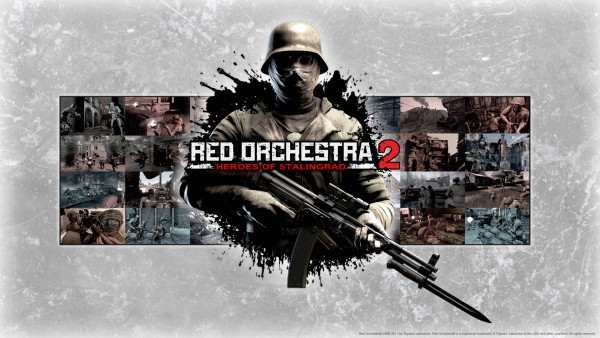



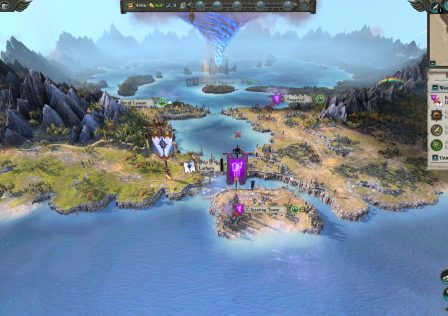
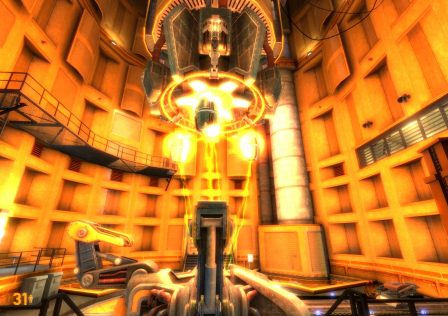

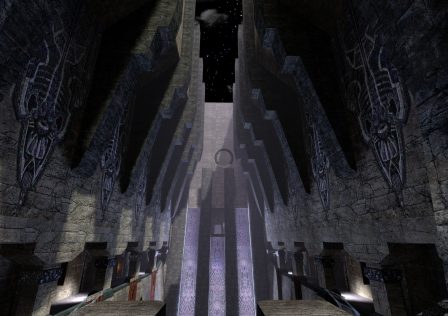
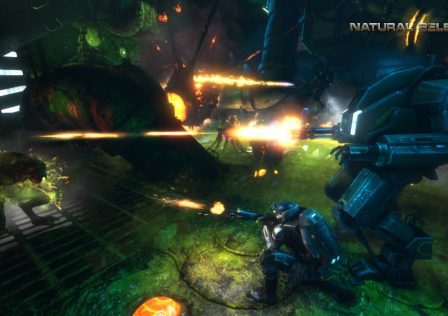

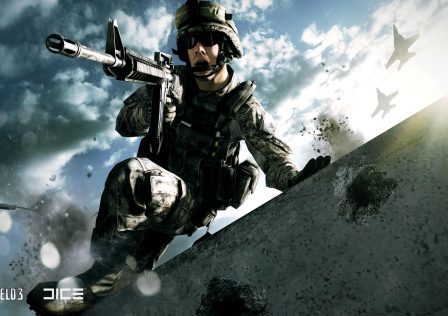

[…] should be. Not only did they release this game for a mere $20, but they also include all Red Orchestra 2 multiplayer content in that very same package, merging them into one game. $20 for two […]
[…] and operate the main cannon at the same time – something dumbed down considerably compared to Red Orchestra 2 for example. You’ll also use a coaxial machine gun inside the […]